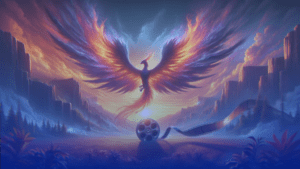Well, my dear, gather around. Grandma has a fascinating tale to tell you tonight, one of dreams and creativity, and of how the magic of the movies came to be what it is today. You see, long ago, even before your grandma was a young girl, the movie industry was a simple yet exciting world. People flocked to cinemas to witness marvels unfolding on the giant screens, marvels that were crafted painstakingly by hand with real objects and captured on film.
The earliest filmmakers were sorcerers of sorts, manipulating physical things to create illusions on film. They used miniatures, puppets, and even stop-motion animations to tell stories. As technology began to evolve, so did their tools, and soon they discovered a new kind of magic: Computer Generated Imagery, or CGI as it’s known.
With CGI, these artists could create things from scratch within a computer. They started with simple objects but soon progressed to entire scenes and even complex characters! It was like having an entire universe at their fingertips, all with the power of 3D modeling software. It was a time of boundless creativity and endless possibilities, opening up new horizons for filmmakers.
But, my dear, that was not all. There was another type of wizardry at work – Visual Effects, or VFX. Unlike the physical magic of old or the digital creations of CGI, VFX was all about enhancing and manipulating the footage captured with a camera. It was like adding a dash of sparkle to an already beautiful painting. These VFX artists could take what was real and amplify it, adding a touch of wonder and excitement.
From the 1960s to the 70s, 80s, and 90s, these wizards honed their craft, their spells becoming more powerful and intricate. With every passing decade, movies became more visually stunning and enthralling. Then, something extraordinary happened at the turn of the millennium. A new tool was discovered – digital compositing. This allowed the artists to combine real footage with their computer-generated creations seamlessly, creating an even more immersive illusion.
Today, the spells of VFX are woven into almost every film you see. It has also spread its magic to other realms like advertising, video games, and even virtual reality. But my dear, the story doesn’t end there.
In our magical realm of filmmaking, a new kind of sorcery is emerging, known as In-Camera Visual Effects or ICVFX. This magic blends the virtual and real elements during filming itself, using tools like LED screens to display virtual backgrounds in real-time. This not only reduces the need for post-production work but also allows filmmakers to create even more stunning visual effects.
Now, we stand at the edge of a new era, where real-time graphics and ICVFX are shaping the future of filmmaking. We have journeyed from practical effects, through the digital revolution of CGI and VFX, to this exciting new frontier. The story of film graphics is a tale of constant innovation, driven by magical advancements in technology. It’s a tale of how we’ve enhanced storytelling, making it more immersive and visually stunning.
So, my dear, as you close your eyes and dream of distant galaxies and mythical creatures, remember that these are not just figments of imagination, but a testament to human creativity and technological prowess. This is the magic of film graphics, my dear, and I assure you, the future holds even more wonder and excitement. Now, sweet dreams, and remember, the screen’s the limit!





